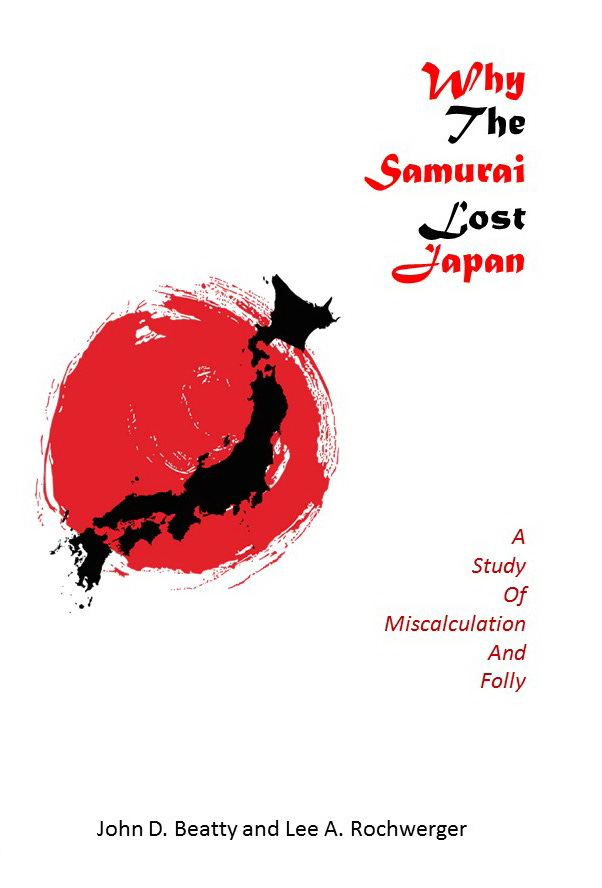The Roots of Samurai Rage: An Introduction
It didn't all happen at once
Like if you want using the keys below; only I can see who you are.
There were several events and phenomena in Japan’s history that supplied ample fuel to a simmering fire that seemed to have been burning in the minds of much of the military and naval leadership of Japan before 1941. While much of Japan was quietly intent on merely surviving, the dominant social group in the archipelago was constantly trying to either stay in charge or justify having been in charge. As shown by the various “insults” and momentous events in Japan over the centuries, the formation of movements and societies and the ensuing incidents happened all too easily. Too, Japan and the Japanese were apparently masters at holding a grudge.
These essays examine the most important aspects of samurai rage against the West and their own subjects, whom they had sworn to protect, and their constant fear of being overthrown or contradicted.
Perry and the “Opening” of Japan: When Matthew Perry and his fleet arrived in 1853, they mistakenly believed that Japan would become a rational actor in world affairs. They were wrong.
Meiji’s Reforms and Men of High Purpose: The Meiji Emperor Mutsuhito took it on himself (supposedly) to “reform” Japan into a modern industrial state with a democratically elected government. It didn’t happen quite that way.
China, The Triple Intervention, and The Peking Relief: While being dragged kicking and screaming into the 19th Century, Japan fought two wars against China. It “won” both, but was still resentful of the outcomes.
Russia: Japan’s war against Russia surprised the rest of the world but devastated Japan’s economy and its relations with Europe. No one affected would soon forget.
The Great War: Japan entered World War One on the side of the Entente, but acted contrary to British imperial intentions. Japan’s “intervention” in the Russian Revolution would be the most memorable, yet least successful, of its participation. Japan’s occupation and colonization of former German islands in the Pacific was the lasting legacy, and so was the idea of resource autarky.
Manchuria: When Japan defeated Russia in 1905, it gained a stake in a business in Manchuria. Japan’s Army wanted more.
The Kwantung Army and its Railway Company: After Japan took charge in Manchuria, its railroads and associated businesses thrived under Army control. It also became a base for radical militarism and fanatical nationalism.
Keeping Order at Home: The popular pre-1941 image of colorful Japan with a Constitution and elected government hid the truth of Japan’s brutal repression of dissent and a fragile economy.
Gekokujō and Domestic Chaos: Another popular image—social order in Japan—was not only wrong, it was deadly, camouflaging the decline of democratic institutions and the rise of samurai power over Japanese affairs.
China and its Allies: In an eternal quest for resources, Japan embarked on a war with China that never seemed to end, that consumed all Japan could muster. China’s allies—actually suppliers—included Great Britain, Germany, Russia and the United States. Two would become Japan’s “allies;” three would become enemies.
American “Perfidity”: Japan viewed the United States with favor, admiration, envy, dread and hatred, all at once and for all the same reasons. When the Americans supported China against Japan, and Britain and Russia against Germany, Japan came to view America as a great evil.
The Hopeless War on the Horizon: Before America imposed the embargoes of 1941, Japanese leaders knew that moving into Southeast Asia would anger them and lead to war in the Pacific that, if it lasted more than a few months, Japan could not win. But “face” in China was involved, and such a hopeless war became inevitable.
The Roots of Samurai Rage: Japan’s March to Armageddon
This project is in its embryonic stages,. The above essays, most taken from my collaboration with Lee Rochwerger (below), outline the basics of the story of how Japan went from a medieval, insular society to an East Asia powerhouse in less than a century, and how that breakneck growth ultimately failed the Japanese people.
Why The Samurai Lost Japan: A Study Of Miscalculation And Folly
While we were researching Why the Samurai Lost Japan, which is a failure analysis of Japan in WWII, we found a great deal of material we didn’t use because, well; it was just gilding the lily, not adding to our thesis.
The Roots of Samurai Rage uses much of the material we left out, some we used, and a great deal more besides. Don’t expect to see it until late 2026.
And Finally...
On 14 June:
1775: The American Second Congress creates the Continental Army (ten companies of sharpshooters for a year’s service) at the Pennsylvania State House, in Philadelphia, Pennsylvania. Unlike the state militias, the Continentals would be subject to service wherever the fighting might have taken them. Congress appointed George Washington Commander-in-Chief the next day.
1777: The American Second Congress approves the stars-and-stripes flag design for national colors at the Pennsylvania State House, in Philadelphia, Pennsylvania. It was the first authorized flag to fly over ALL American military units and vessels. France was the first country to salute the Stars and Stripes, occurring at Quiberon Bay in 1778.
1946: Donald J. Trump is born in Jamaica Hospital Medical Center, New York, New York. After a successful career in real estate and the entertainment industry, Trump became the 45th and the 47th president of the US.
And today is both the ARMY BIRTHDAY and FLAG DAY in the United States. I’m sure some bureaucrats would have applauded the consolidation of the days if they’d thought of it then. Observance of the Army’s birthday has been irregular, and it is not a holiday. A Wisconsin teacher first observed the flag's birthday in 1885, with Flag Day becoming a national holiday in 1916.


